n & k determination (reflection, transmission, ellipsometry)
Products > Experimental and theorectical investigations of optical coatings
Our Cr and CrO coatings are ideal for applications such as mask blanks, microstructures, AR coatings and etch masks for microfluidic devices. Optical constants are most important for the performance of optical components and play a key role in the selection of suitable optical applications. The refractive index (n) is important for the reflectivity, optimization of anti-reflection and coloration of the coating systems. The extinction coefficient (k), related to the absorption coefficient by a = 4pk/l , defines the internal transmittance Ti= exp(-ta), where l is wavelength and t is the thickness of the material, and therefore the total transmission (T) and optical density D= -log10(T).
Spectral ellipsometer (SE) measurements of tg(Ψ) and cos(Δ) with a 71° angle of incidence were performed in combination with normal incidence reflection measurements on a KLA-Tencor Spectra Fx 200 and UV1280 tool and OP5240 (Therma-Wave) for determination of thickness and optical constants of dielectric films. The thickness results were proved by performing additional X-ray reflectometry measurements.
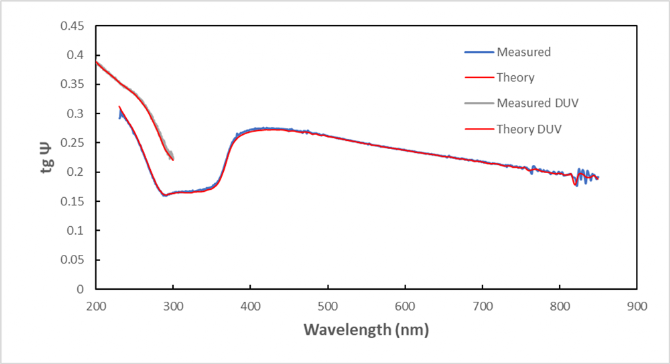
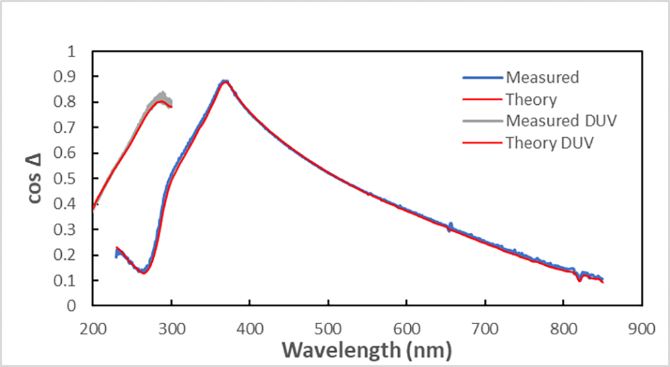
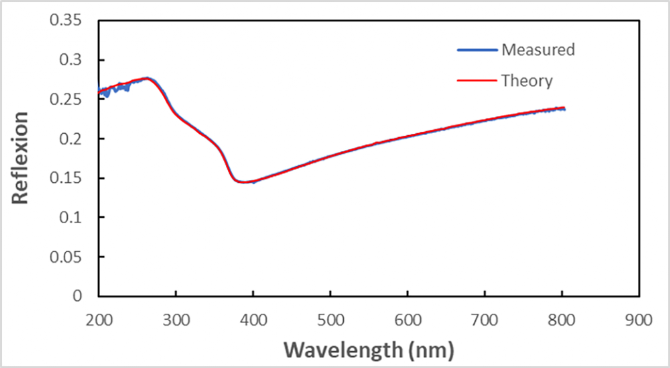
FIG. 1.1. Experimental tan(Ψ), cos(Δ) at angle of incidence (AOI) of 63°, 71°, and reflectivity measurements and simulations (red) performed 42 nm Chrome-Oxid covered Si(100) wafers. The thickness was determined from XRR measurements shown in Fig. 1.2.
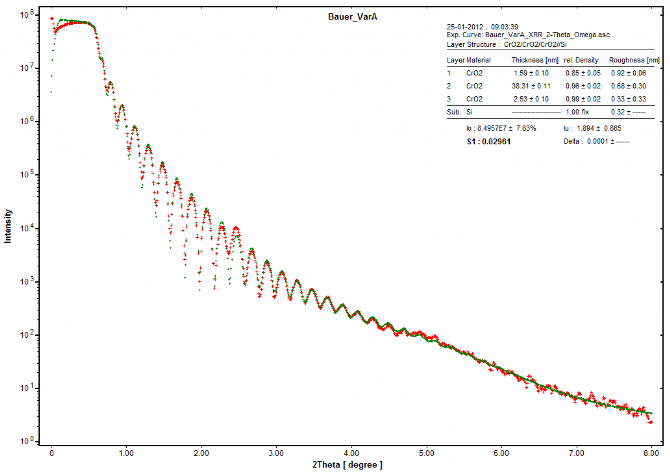
FIG. 1.2. X-ray reflectometry (XRR) measurement on Chrome-Oxid layer and corresponding simulation with a simple 3-layer model. The determined thickness is 42nm. These measurements are extremely helpful for determining the optical constants.
Results
The optical constants of Chrome-Oxid were extracted by a point-by-point fit at each individual wavelength based on the measurements (Fig. 1.1.). In Figure 1.3. the extracted optical constants are shown.
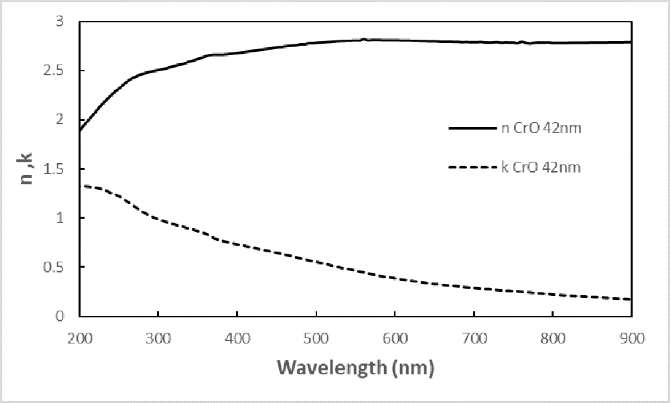
FIG. 1.3. Optical constants of Chrome-Oxid.
The optical constants of chromium were determined in an analogous manner.
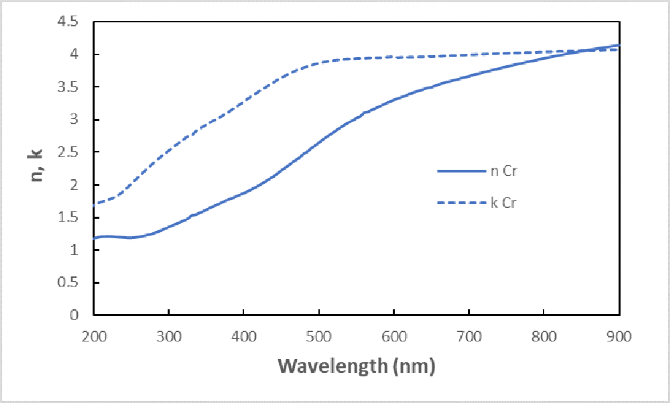
FIG. 1. 4. Optical constants of Chrome.

